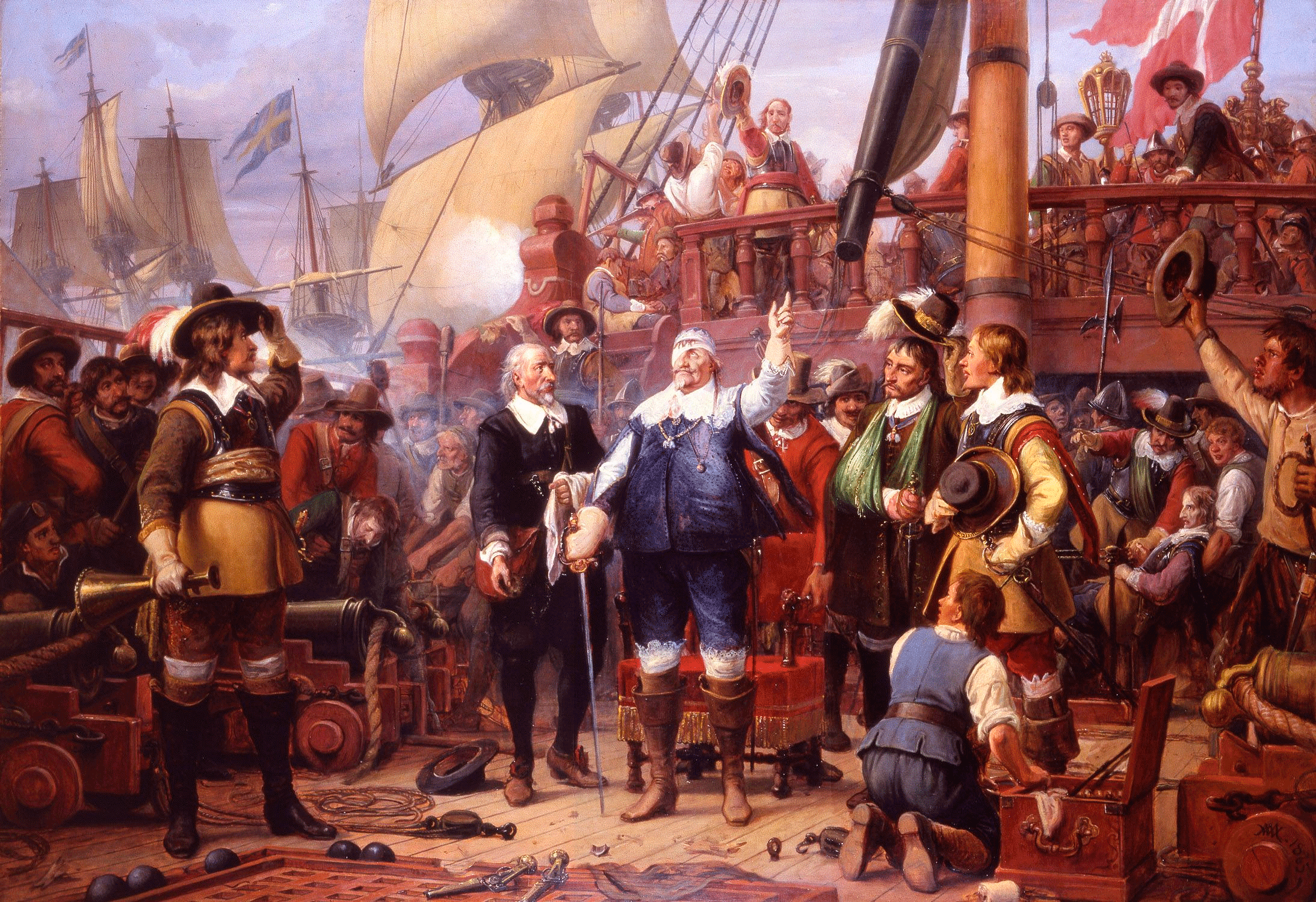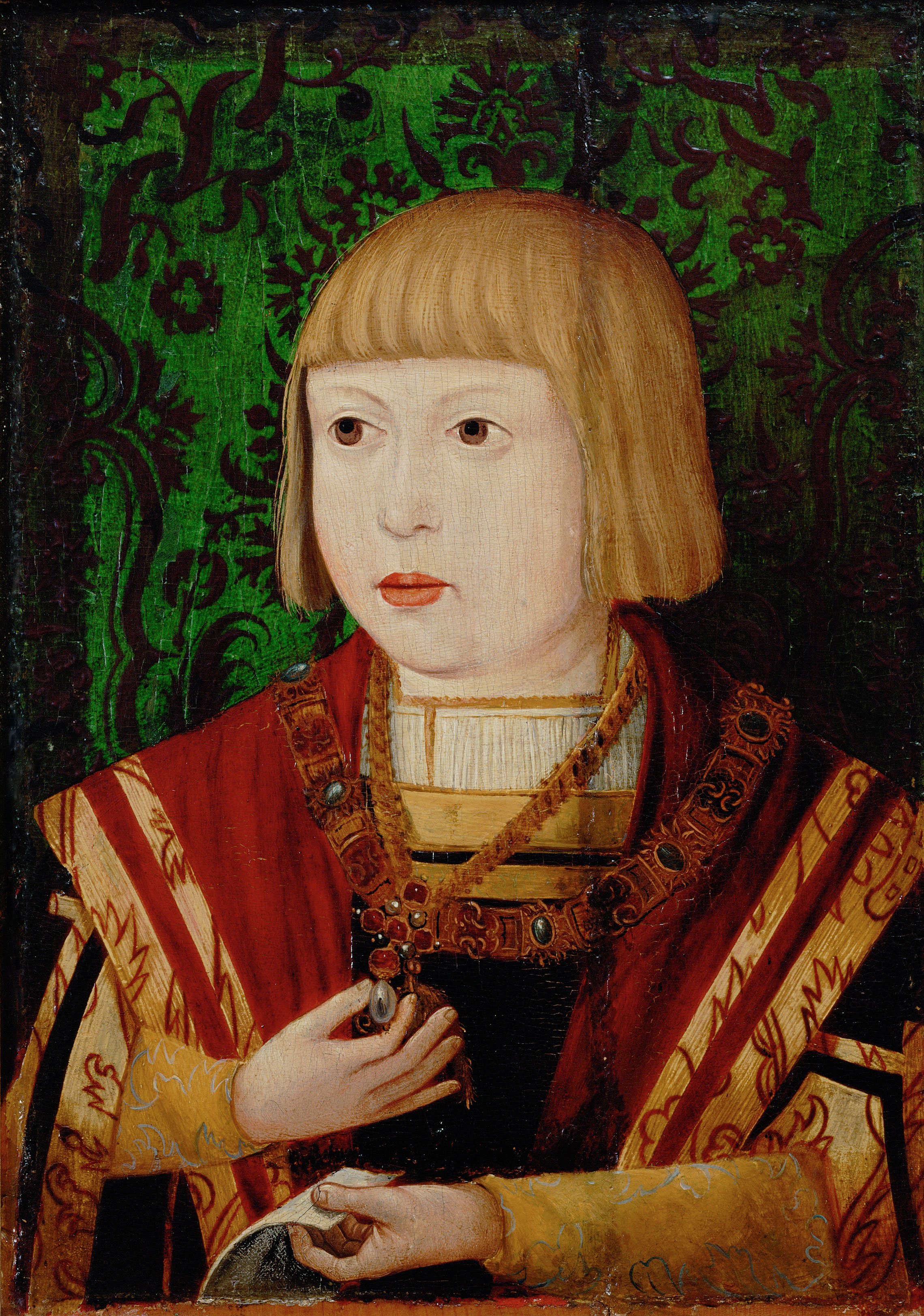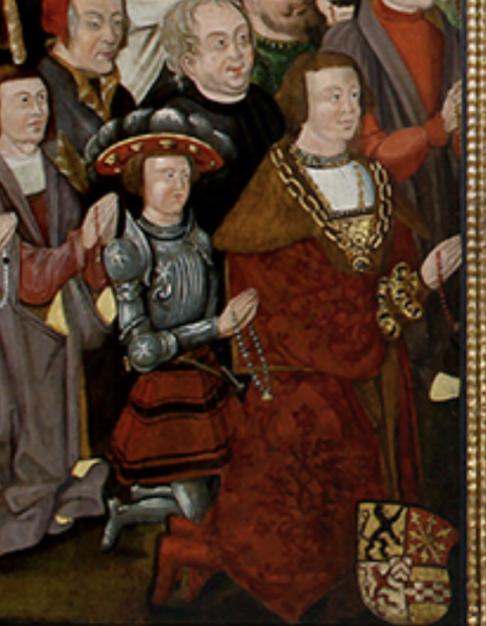|
Johann Friedrich, Count Palatine Of Sulzbach-Hilpoltstein
Johann Friedrich (23 August 1587 – 19 October 1644) was the Count Palatine of Sulzbach-Hilpoltstein from 1614 until 1644. Life Johann Friedrich was born in Neuburg in 1587 as the youngest son of Philipp Ludwig, Count Palatine of Neuburg and Anna of Cleves. After his father's death in 1614, his territories were partitioned between Johann Friedrich and his brothers; Johann Friedrich being the youngest he received the Lordship of Hilpoltstein. He died in Hilpoltstein in 1644 and was buried in Lauingen. Marriage Johann Friedrich married Sophie Agnes (12 January 1604 – 8 September 1664), daughter of Landgrave Louis V of Hesse-Darmstadt The Landgraviate of Hesse-Darmstadt () was a State of the Holy Roman Empire, ruled by a younger branch of the House of Hesse. It was formed in 1567 following the division of the Landgraviate of Hesse among the four sons of Landgrave Philip I. ..., in 1624 and had the following children: #Anne Louise (11 October 1626 – 23 February ... [...More Info...] [...Related Items...] OR: [Wikipedia] [Google] [Baidu] |
House Of Wittelsbach
The House of Wittelsbach () is a former Bavarian dynasty, with branches that have ruled over territories including the Electorate of Bavaria, the Electoral Palatinate, the Electorate of Cologne, County of Holland, Holland, County of Zeeland, Zeeland, Sweden (with Finland under Swedish rule, Swedish-ruled Finland), Denmark, Norway, Kingdom of Hungary, Hungary, Kingdom of Bohemia, Bohemia, and Kingdom of Greece, Greece. Their ancestral lands of Bavaria and the Electoral Palatinate, Palatinate were prince-electorates, and the family had three of its members elected emperors and kings of the Holy Roman Empire. They ruled over the Kingdom of Bavaria which was created in 1805 and continued to exist until 1918. The House of Windsor, the reigning royal house of the British monarchy, are descendants of Sophia of Hanover (1630–1714), a Wittelsbach Princess of the Palatinate by birth and List of Hanoverian royal consorts, Electress of Hanover by marriage, who had inherited the success ... [...More Info...] [...Related Items...] OR: [Wikipedia] [Google] [Baidu] |
Louis II, Count Palatine Of Zweibrücken
Louis II of Zweibrücken () (14 September 1502 – 3 December 1532) was Count Palatine and Duke of Zweibrücken from 1514 to 1532. Early life He was the son of Alexander, Count Palatine of Zweibrücken (1462–1514) and his wife Countess Margarete of Hohenlohe-Neuenstein (1480–1522). Marriage and issue He was married in 1525 to Elisabeth of Hesse, daughter of William I, Landgrave of Lower Hesse, and they had two children. His son Wolfgang inherited the title and his daughter Christine died young in 1534. Death Louis II died on 3 December 1532 and was buried in the crypt of Alexanderskirche (a church named for his father, who funded the original construction) in Zweibrücken Zweibrücken (; ; , ; literally translated as "Two Bridges") is a town in Rhineland-Palatinate, Germany, on the Schwarzbach (Blies), Schwarzbach River. Name The name ''Zweibrücken'' means 'two bridges'; older forms of the name include Middl .... Ancestors References External lin ... [...More Info...] [...Related Items...] OR: [Wikipedia] [Google] [Baidu] |
1644 Deaths
It is one of eight years (CE) to contain each Roman numeral once (1000(M)+500(D)+100(C)+(-10(X)+50(L))+(-1(I)+5(V)) = 1644). Events January–March * January 22 – The Royalist Oxford Parliament is first assembled by King Charles I of England. * January 26 – First English Civil War: Battle of Nantwich – The Parliamentarians defeat the Royalists, allowing them to end the 6-week siege of the Cheshire town. * January 30 **Dutch explorer Abel Tasman departs from Batavia in the Dutch East Indies (modern-day Jakarta in Indonesia) on his second major expedition for the Dutch East India Company, to map the north coast of Australia. Tasman commands three ships, ''Limmen'', ''Zeemeeuw'' and ''Braek'', and returns to Batavia at the beginning of August with no major discoveries. ** Battle of Ochmatów: Polish–Lithuanian Commonwealth forces under hetman Stanisław Koniecpolski secure a substantial victory over the horde of Crimean Tatars under Tugay Be ... [...More Info...] [...Related Items...] OR: [Wikipedia] [Google] [Baidu] |
1587 Births
Events January–March * January 7 – Sir Walter Raleigh appoints John White to be the Governor of the Roanoke Colony, to be established later in the year by English colonists on Roanoke Island off the coast of what is now the U.S. state of North Carolina.Andrew Lawler, '' The Secret Token: Myth, Obsession, and the Search for the Lost Colony of Roanoke'' (Doubleday, 2018) pp.90, 181-182 White and 121 other colonists depart from Portsmouth on three ships on May 8 and arrive at Croatoan Island on July 22. * January 14 – In Japan, Chancellor of the Realm Toyotomi Hideyoshi ends Portugal's control of the port of Nagasaki after six years. Omura Sumitada had leased the fishing village to Portuguese Jesuits on August 15, 1580. * February 5 – (1st waxing of Tabaung 948 ME) King Nanda of Burma appoints his eldest son and heir apparent, Minye Kyawswa II, as Viceroy of Ava, now part of upper Burma, with a capital at Inwa (located in what is now the Mandalay ... [...More Info...] [...Related Items...] OR: [Wikipedia] [Google] [Baidu] |
People From Neuburg An Der Donau
The term "the people" refers to the public or common mass of people of a polity. As such it is a concept of human rights law, international law as well as constitutional law, particularly used for claims of popular sovereignty. In contrast, a people is any plurality of persons considered as a whole. Used in politics and law, the term "a people" refers to the collective or community of an ethnic group or nation. Concepts Legal Chapter One, Article One of the Charter of the United Nations states that "peoples" have the right to self-determination. Though the mere status as peoples and the right to self-determination, as for example in the case of Indigenous peoples (''peoples'', as in all groups of indigenous people, not merely all indigenous persons as in ''indigenous people''), does not automatically provide for independent sovereignty and therefore secession. Indeed, judge Ivor Jennings identified the inherent problems in the right of "peoples" to self-determination, as i ... [...More Info...] [...Related Items...] OR: [Wikipedia] [Google] [Baidu] |
Counts Palatine Of Sulzbach
Count (feminine: countess) is a historical title of nobility in certain European countries, varying in relative status, generally of middling rank in the hierarchy of nobility. Pine, L. G. ''Titles: How the King Became His Majesty''. New York: Barnes & Noble, 1992. p. 73. . Especially in earlier medieval periods the term often implied not only a certain status, but also that the ''count'' had specific responsibilities or offices. The etymologically related English term "county" denoted the territories associated with some countships, but not all. The title of ''count'' is typically not used in England or English-speaking countries, and the term ''earl'' is used instead. A female holder of the title is still referred to as a ''countess'', however. Origin of the term The word ''count'' came into English from the French ', itself from Latin '—in its accusative form ''comitem''. It meant "companion" or "attendant", and as a title it indicated that someone was delegated to re ... [...More Info...] [...Related Items...] OR: [Wikipedia] [Google] [Baidu] |
Christian Augustus, Count Palatine Of Sulzbach
Christian Augustus (German: Christian August) (26 July 1622 – 23 April 1708) was the Count Palatine of Sulzbach from 1632 until 1708. Life Christian Augustus was born in Sulzbach in 1622 as the eldest son of Augustus, Count Palatine of Sulzbach and Hedwig of Holstein-Gottorp. He succeeded his father in August 1632, at the age of 10. Christian Augustus was a tolerant ruler. He granted his citizens the right to choose their Christian denomination and introduced the Simultaneum, whereby churches had both Protestant and Catholic services. In 1666 he permitted Jews to settle in the Duchy of Sulzbach and, due to his interest in mysticism and the Kabbalah, allowed a Hebrew print-shop. Under his rule, Sulzbach also became an intellectual center and the site of a regionally significant printing industry. Christian had a close relationship with his granddaughter Sibylle of Saxe-Lauenburg, wife of Louis William of Baden-Baden and Regent of her son's dominions. Christian Augustus d ... [...More Info...] [...Related Items...] OR: [Wikipedia] [Google] [Baidu] |
Anne Of Bohemia And Hungary
Anna of Bohemia and Hungary (23 July 1503 – 27 January 1547), sometimes known as Anna Jagellonica, was Queen of Germany, List of Bohemian consorts, Bohemia, and List of Hungarian consorts, Hungary and Archduchess of Austria as the wife of King Ferdinand I, Holy Roman Emperor, Ferdinand I (later Holy Roman Emperor). Early life She was the oldest child and daughter of King Vladislaus II of Bohemia and Hungary (1456–1516) and his third wife Anne of Foix-Candale. King Louis II of Hungary and Bohemia was her younger brother. Her paternal grandparents were King Casimir IV Jagiellon (of the Jagiellon dynasty) and Elisabeth of Austria (d. 1505), Elisabeth of Austria, one of the heiresses of the Kingdom of Bohemia, the Duchy of Luxembourg and the Duchy of Kuyavia. Her maternal grandparents were Gaston de Foix, Count of Candale, and Infanta Catherine of Navarre, Catherine de Foix, an Infanta of the Kingdom of Navarre. Anne was born in Buda (now Budapest). The death of Vladislau ... [...More Info...] [...Related Items...] OR: [Wikipedia] [Google] [Baidu] |
Ferdinand I, Holy Roman Emperor
Ferdinand I (10 March 1503 – 25 July 1564) was Holy Roman Emperor from 1556, King of Bohemia, King of Hungary, Hungary, and List of rulers of Croatia, Croatia from 1526, and Archduke of Austria from 1521 until his death in 1564.Milan Kruhek: Cetin, grad izbornog sabora Kraljevine Hrvatske 1527, Karlovačka Županija, 1997, Karslovac Before his accession as emperor, he ruled the Erblande, Austrian hereditary lands of the House of Habsburg in the name of his elder brother, Charles V, Holy Roman Emperor. Also, he often served as Charles' representative in the Holy Roman Empire and developed encouraging relationships with German princes. In addition, Ferdinand also developed valuable relationships with the German banking house of Jakob Fugger and the Catalan bank, Banca Palenzuela Levi Kahana. The key events during his reign were the conflict with the Ottoman Empire, which in the 1520s began a great advance into Central Europe, and the Protestant Reformation, which resulted in s ... [...More Info...] [...Related Items...] OR: [Wikipedia] [Google] [Baidu] |
Maria Of Jülich-Berg
Maria of Jülich-Berg (3 August 1491 – 29 August 1543) was the Duchess of Jülich-Berg, as the daughter of William IV, Duke of Jülich-Berg, Wilhelm IV, Duke of Jülich-Berg and Sibylle of Brandenburg. She became heiress to her father’s estates of Duchy of Jülich, Jülich, Berg (state), Berg and County of Ravensberg, Ravensberg after it had become apparent that her parents’ marriage would not produce any more children. In 1509, Maria married John III, Duke of Cleves. Their daughter, Anne of Cleves, Anna, became the fourth consort of Henry VIII, King Henry VIII of England. Early life Duchess Maria was born on 3 August 1491 in Jülich, Germany, as the only child of William IV, Duke of Jülich-Berg, Duke Wilhelm IV and Sibylle of Brandenburg, Duchess Sibylle, the daughter of Albert III Achilles, Elector of Brandenburg, and his wife Anna of Saxony, Electress of Brandenburg, Anna of Saxony, daughter of the Elector Frederick II, Elector of Saxony, Frederick II of Saxony from his ... [...More Info...] [...Related Items...] OR: [Wikipedia] [Google] [Baidu] |
John III, Duke Of Cleves
John III, Duke of Cleves and Count of Mark ( German: ''Johann III der Friedfertige''; 10 November 1490 – 6 February 1539), known as John the Peaceful, was the Lord of Ravensberg, Count of Mark, and founder of the United Duchies of Jülich-Cleves-Berg. Life John was born on 10 November 1490, as the son of John II, Duke of Cleves, and Mathilde of Hesse. In 1510, at the age of 19, John married Duchess Maria of Jülich-Berg, daughter of Duke William IV of Jülich-Berg and Sibylle of Brandenburg, who became heiress to her father's estates Jülich, Berg and Ravensberg. John became ruler of the United Duchies of Jülich-Cleves-Berg in 1521, and Lord of Ravensberg in 1528. John represented a compensatory attitude, which strove for a ' between the two confessions during the Protestant Reformation. In fact, the real influence at the court of Cleves was Erasmus. Many of his men were friends and followers of the Dutch scholar and theologian. In 1532 John wrote up a list of c ... [...More Info...] [...Related Items...] OR: [Wikipedia] [Google] [Baidu] |
Christine Of Saxony
Christine of Saxony (25 December 1505 – 15 April 1549) was a German noblewoman, landgravine consort of Hesse by her marriage to Philip I, Landgrave of Hesse. She was the regent of Hesse during the absence of her spouse in 1547–1549. Life She was a daughter of George the Bearded, Duke of Saxony and Barbara Jagiellon. She married Landgrave Philip I, Landgrave of Hesse on 11 December 1523 in Kassel. The marriage was arranged to forge a political alliance between Hesse and Saxony and was unhappy. Philip claimed to be disgusted by her and the "sexual wasteland" of his arranged marriage, said that he only shared her bed by duty and stated that she drank too much. Christine was nevertheless frequently pregnant; she gave birth to ten children in twenty years, nine of whom lived to adulthood. Whilst married to Christine, Philip had adulterous affairs from as early as 1526 and even practised bigamy. He had another nine children with his other (morganatic) wife, Margarethe von der ... [...More Info...] [...Related Items...] OR: [Wikipedia] [Google] [Baidu] |






